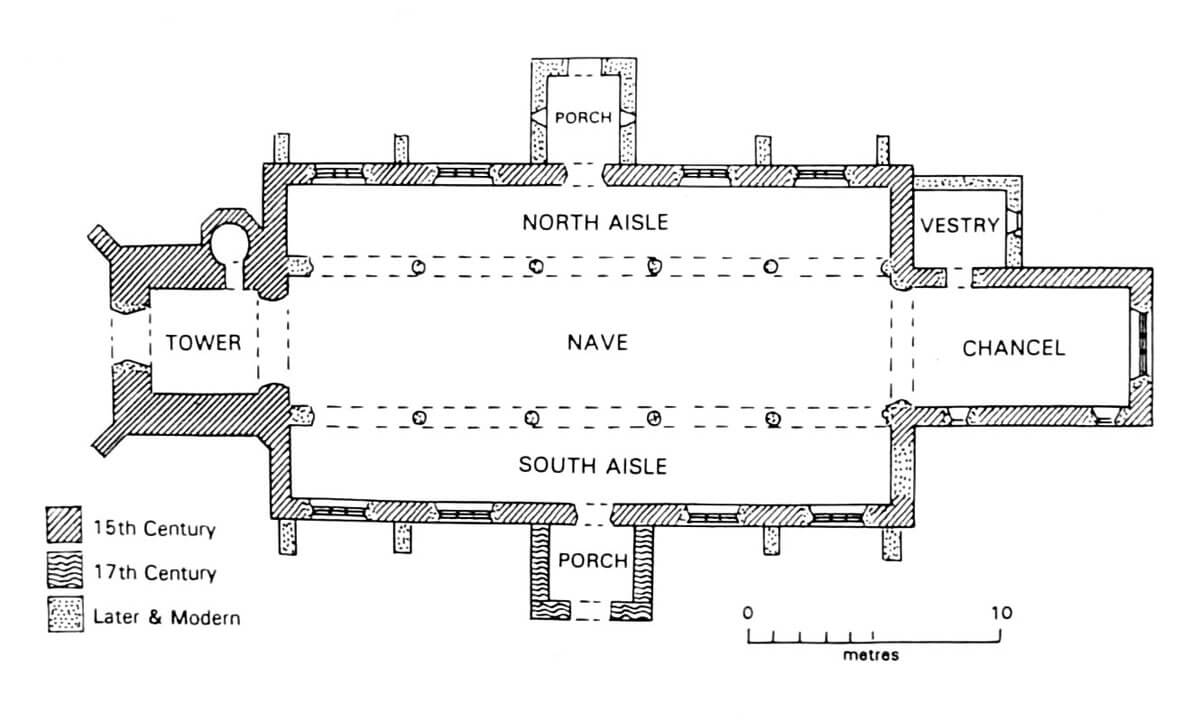History
The church of the Three Saints: St. Illtyd, St. Gwynno and St. Dyfodwg, was built in the 13th century on the site of an earlier temple from the 7th-9th centuries. The first mention about it appeared in 1254. In the fifteenth century, a tower was added, and in the seventeenth a southern porch was built or rebuilt. In the second half of the nineteenth century, the church underwent a major renovation combined with reconstruction, including the northern porch and sacristy.
Architecture
The medieval church consisted of a wide, three-aisle nave of a hall structure, slightly narrower than the central nave, a rectangular chancel on the eastern side and a four-sided tower on the west side. The tower was reinforced with two corner, four-stepped buttresses situated diagonally. It was also topped with battlement and a polygonal communication turret on the north-eastern side. The nave of the church was not originally surrounded by buttresses. It received five bays with alternating round and polygonal pillars delineating the division into three aisles. The chancel ended with a straight wall without buttresses.
Current state
The church has retained its late-medieval shape until the present day, but is enlarged by two early modern porches and a sacristy at the presbytery. Inside, you can see the 13th-century tombstone of Cadwgan Fawr from Miskin and the 15th-century octagonal baptismal font.
bibliography:
Salter M., The old parish churches of Gwent, Glamorgan & Gower, Malvern 2002.
Website britishlistedbuildings.co.uk, Church of St Illtyd, St Gwynno and St Dyfodwg A Grade II Listed Building in Llantrisant, Rhondda Cynon Taff.
Website wikipedia.org, Llantrisant Church.



